Eye Tricks: Why Our Eyes See Optical Illusions
We’re often told that seeing is believing, but when it comes to matters of vision, our eyes have a habit of deceiving us. For centuries, people have been fascinated with optical illusions and eye trick, and with good reason: While they’re fun to look at — often challenging us to see things in new ways — they also reveal a great deal about how the brain interprets what we see and shapes our perception of reality. This April Fool’s Day, we’re exploring the science behind these tricks that our own minds play on us.
Research on optical illusions highlights one major point: that our visual system is too limited to accurately process all of the information that our eyes take in, so it works on the basis of the most likely interpretation. On rare occasions, the brain interprets wrongly, causing us to perceive something inaccurately — an optical illusion. On other occasions, different people can perceive things in different ways. In fact, if you’ve ever struggled to see a “hidden” image in a single-image stereogram, or argued with a friend over the color of a dress, you may have noticed that not everyone experiences visual illusions in the same way.
From straight lines appearing crooked to still images moving on the screen, here are some of the most well-known optical illusions, along with scientific explanations of why they occur.
The Herman Grid Illusion
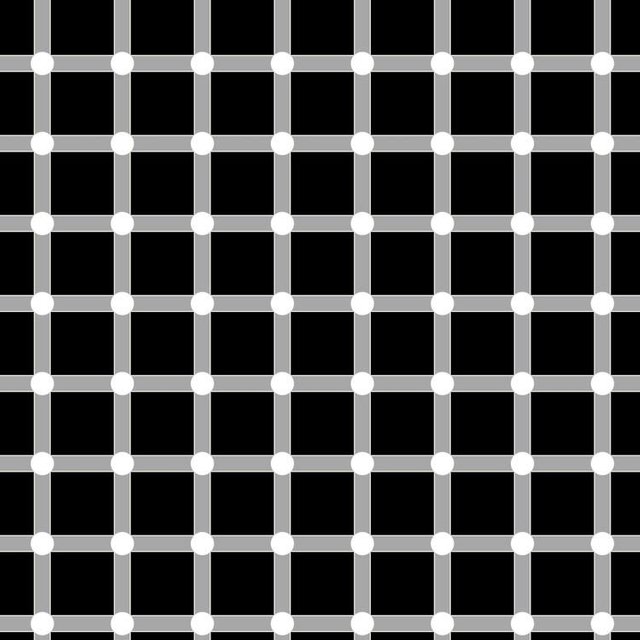 )
)
The Herman Grid illusion was first reported by German physiologist Ludimar Hermann in 1870. As you look at the image, you’ll notice that dark dots quickly appear and disappear at the intersections between the grids. However, when you look directly at an intersection, the dot seems to vanish.
The explanation behind this illusion has been the subject of debate for years, with many claiming it’s the result of “lateral inhibition“— the complex way the cells at the back of the retina respond to black and white.
The Impossible Penrose Triangle
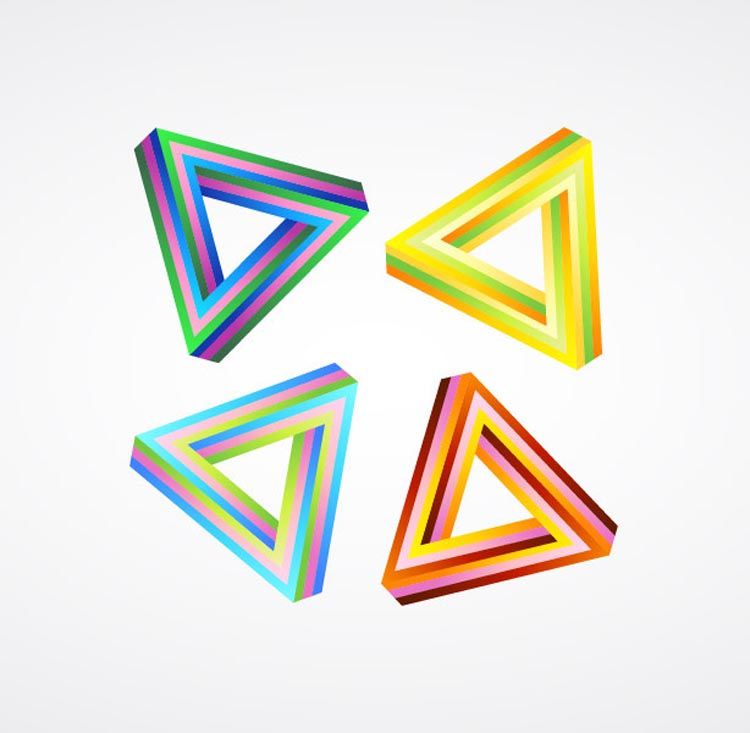
Marrvid | Vector colorful impossible shapes
The idea of the impossible triangle is based on a drawing originally created by physicist Roger Penrose in 1954. As we view the image, we flip back and forth between the equally possible perspectives of the object, which, when considered together, simply couldn’t exist. Try to trace a line around the triangle and you would have to trace it around three times before coming back to where you started.
This illusion plays on the eye’s interpretation of two-dimensional pictures as three-dimensional objects. Our eyes and brain are fooled because they assume that all the corners of the triangle are at the same distance from us, and this leads us to perceive an impossible three-dimensional object.
The Zöllner Illusion
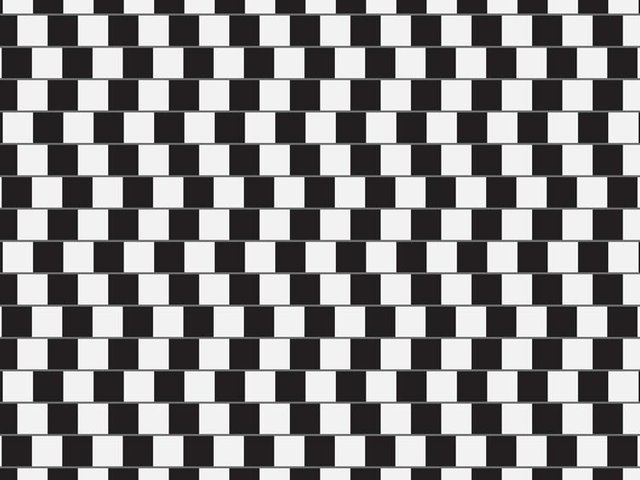
hunthomas | Optical illusion – parallel lines made from black and white pillows

diskoVisnja | optical illusion parallel lines
The Zöllner illusion, discovered by German astrophysicist Johann Karl Friedrich Zöllner in 1860, contains a series of horizontal lines crossed with either overlapping short lines or black and white cubes. As you look at the image, the horizontal lines appear to slope, as if they will eventually collide. In reality, the lines are perfectly parallel to each other.
There are a number of possible explanations for this illusion. One is that the angles between the short and long lines create an impression of depth, with one line appearing closer and the other further away. Another explanation is that the brain tries to increase the angle between the short and long lines, which makes it appear as if the lines are bending toward and away from each other.
Motion Illusions
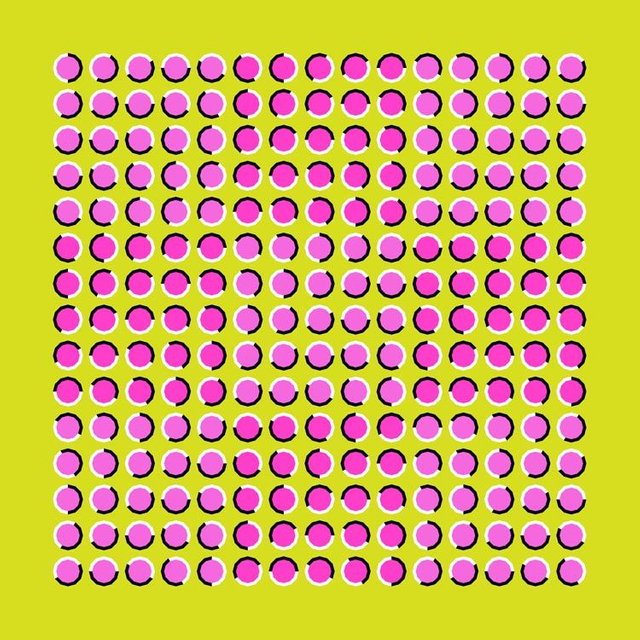
Skripnichenko Tatiana | The optical illusion of movement in the form of fluctuating pink and lilac polygons
Motion illusions rely on the rapid movements called “saccades” that our eyes make as we view something. To experience them, gently place your finger on your eyelid and look around the room. You should feel your eye making dart-like movements, as if if taking a series of snapshots.
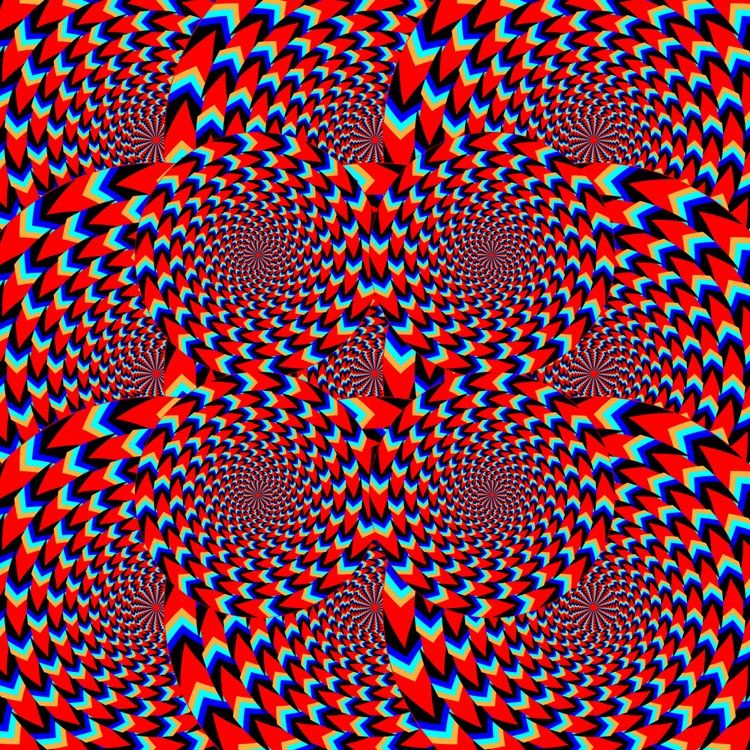.jpg)
Mark Grenier | Chaotic
Although our brain processes these movements as a smooth succession, sometimes they can fool us into thinking that still objects are moving. The rotating snakes illusion above does just that. The image is full of contrasting shapes and colors, composed in such a way that it switches on our motion sensors and tricks our mind.
Shadow Illusions
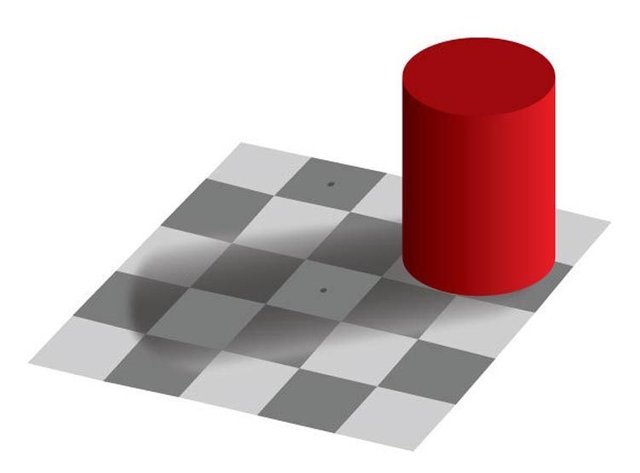
diskoVisnja | Optical illusion same color
This impressive illusion was created by Edward H. Adelson from the Massachusetts Institute of Technology. In it, the two squares marked with dots appear to be two different shades of gray. In reality, they are actually identical in color.
Here, the lower square is cast in the shadow of the red cylinder, while the higher square is outside of the shadow. Although our eye can see two identical shades of gray, our brain reasons that if the square in the shadow reflects the same amount of light as the square outside of the shadow, then it must be a much lighter shade of gray. In effect, our brain alters our perception of the image so that we see the colors as they would likely appear in the real world.
Learn more about visual imagery with these 5 visual takeaways from the show Mad Men.
And for more warped perceptions of reality, check out our Optical Illusion lightbox »
so nice article
thanks for share